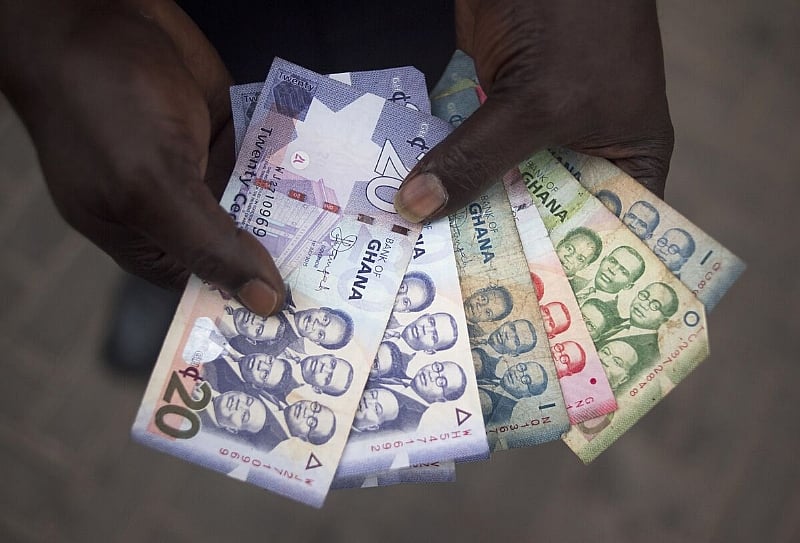The Ghanaian Cedi’s Performance Against Major Currencies: A Comprehensive Overview
The Ghanaian cedi has recently exhibited signs of strengthening against the United States dollar, a development closely monitored by market participants and ordinary citizens alike. As of Thursday, February 20, 2025, the cedi’s buying rate against the dollar stood at GHS15.35, while the selling rate was GHS15.79. This represents a marginal, yet symbolically important, 1-pesewa decrease in the buying rate compared to Tuesday’s average, with the selling rate remaining unchanged. The slight appreciation of the cedi suggests a potential shift in market dynamics, possibly influenced by factors such as increased dollar inflows, improved investor confidence, or government interventions aimed at stabilizing the currency.
At forex bureaus, which serve as vital access points for foreign exchange transactions for individuals and businesses, the cedi traded at GHS15.50 for those exchanging dollars for cedis and GHS15.90 for those converting cedis to dollars. This slight difference between the interbank and forex bureau rates reflects the operational costs and profit margins inherent in the retail foreign exchange market. The data, sourced from Cedirates.com, a trusted platform for currency and fuel information in Ghana, offers a snapshot of the prevailing market conditions and provides a benchmark for individuals and businesses engaged in foreign exchange transactions.
The interbank market, where financial institutions trade currencies amongst themselves, provides another perspective on the cedi’s performance. Here, the cedi traded at GHS15.54 for buying dollars and GHS15.56 for selling dollars. The relatively narrow spread between the buying and selling rates on the interbank market signifies a liquid and efficient market with lower transaction costs compared to the retail forex bureaus. The interbank market’s rates often serve as a reference point for other market segments and provide insights into the overall direction of the currency market.
Turning to other major currencies, the cedi’s performance against the British pound and the euro paints a more nuanced picture. The average exchange rate for converting pounds to cedis was GHS19.27, while converting cedis to pounds stood at GHS19.96. For the euro, the corresponding rates were GHS15.93 for exchanging euros for cedis and GHS16.58 for converting cedis to euros. These exchange rates reflect the interplay of various economic factors, including trade balances, interest rate differentials, and investor sentiment towards the respective currencies.
On the Bank of Ghana interbank market, the pound was selling at GHS19.55, while the euro traded at GHS16.20. These rates, set by the central bank, play a significant role in influencing the overall foreign exchange market and provide a benchmark for commercial banks and other financial institutions. The Bank of Ghana’s intervention in the foreign exchange market aims to maintain stability and manage volatility, contributing to a predictable environment for businesses and individuals engaged in international transactions.
For money transfers, specialized platforms like LemFi and Afriex offer competitive exchange rates for remittances from the US or the UK to Ghana. LemFi offered a rate of GHS15.38 per dollar, while Afriex provided a slightly higher rate of GHS15.47. For the British pound, LemFi’s rate was GHS19.35, and Afriex offered GHS19.92. For the euro, Afriex provided a rate of GHS16.12, while LemFi offered GHS16.03 per €1. These competitive rates reflect the growing importance of remittance flows to the Ghanaian economy and the increasing use of digital platforms for international money transfers.
Finally, for digital subscription payments using Visa and Mastercard for services like Netflix, Spotify, or Apple Music, the exchange rate stood at GHS16.64. This standardized rate for digital transactions provides convenience for users but may also include embedded fees and charges associated with international payment processing. The increasing prevalence of digital subscriptions highlights the evolving landscape of international transactions and the need for transparent and competitive exchange rates in this segment.
In summary, the Ghanaian cedi’s recent performance presents a complex picture, marked by slight appreciation against the US dollar, while maintaining a relatively stable position against the British pound and the euro. Factors influencing these exchange rate movements include market sentiment, trade balances, interest rate differentials, and central bank interventions. The availability of competitive rates for money transfers through platforms like LemFi and Afriex, as well as the standardized rates for digital subscriptions, reflect the dynamic and evolving nature of the foreign exchange market in Ghana and its impact on individuals and businesses alike. Monitoring these trends and understanding the underlying factors driving exchange rate fluctuations is crucial for informed decision-making in a globalized economy.


